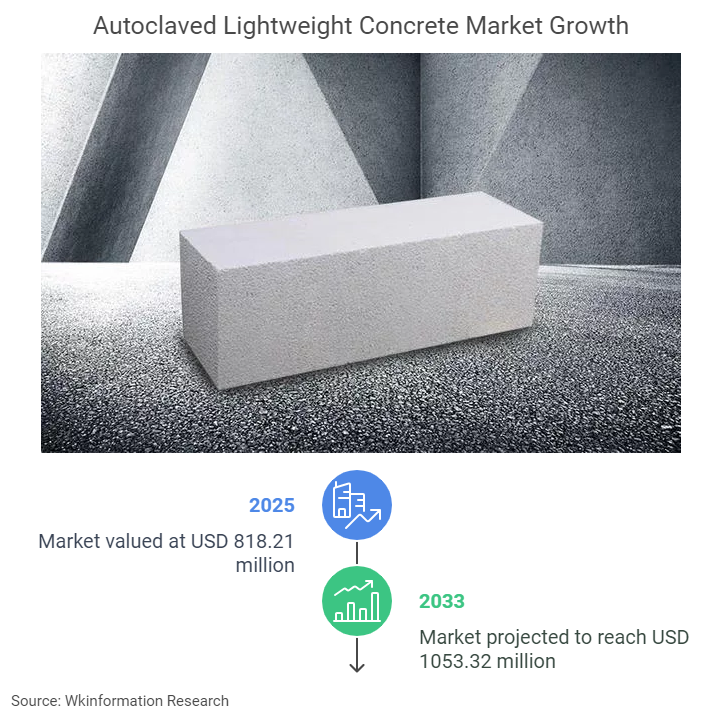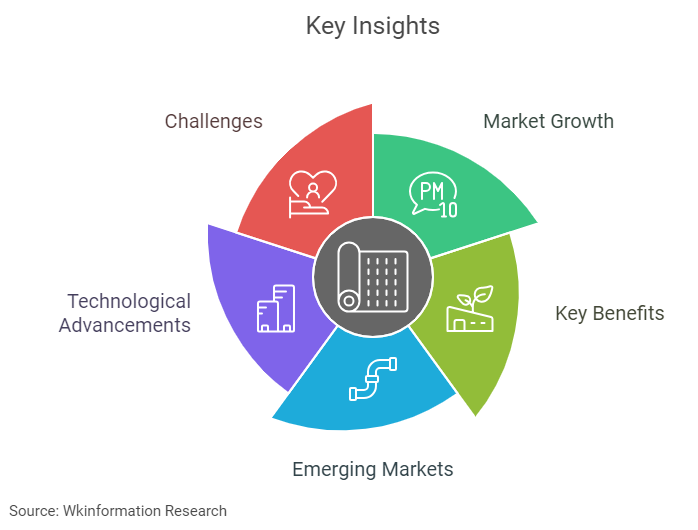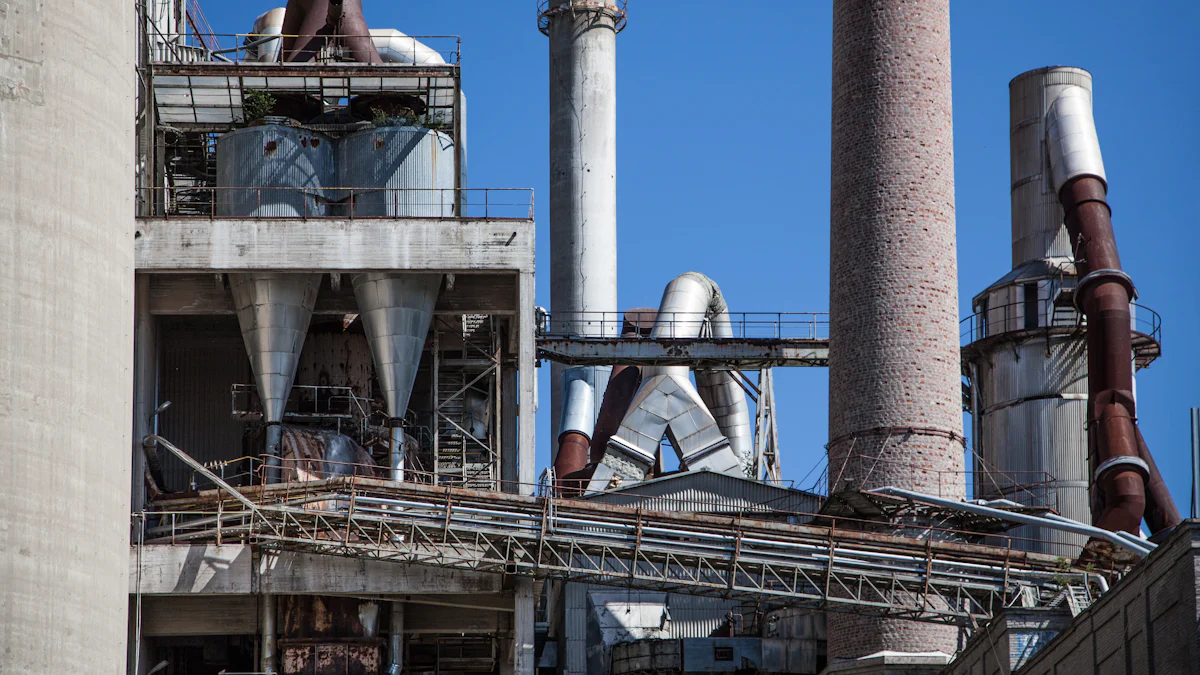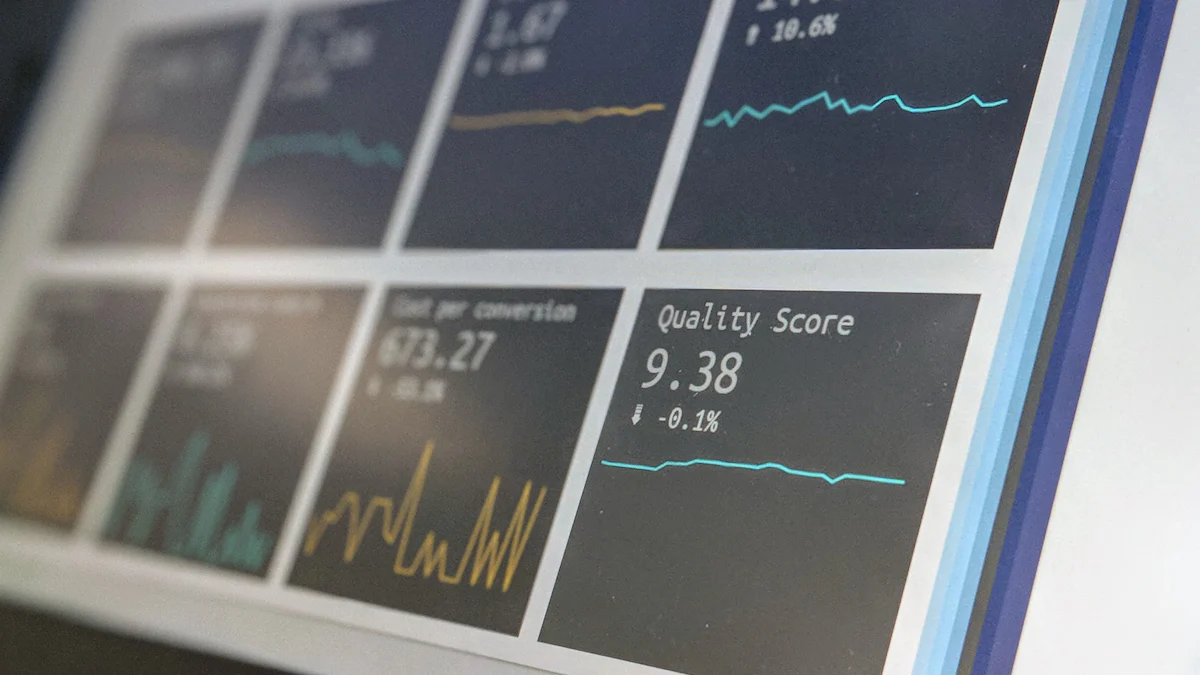
The autoclaved lightweight concrete market plays a pivotal role in modern construction by offering innovative and eco-friendly solutions. Valued at USD 818.21 million in 2025, this market is projected to grow to USD 1053.32 million by 2033, reflecting its increasing importance. Urbanization has significantly boosted demand, particularly in emerging economies, where lightweight materials are essential for high-rise buildings. Autoclaved aerated concrete, a key segment, is driving trends in sustainable construction materials. Its energy-efficient and cost-effective properties make it indispensable for eco-friendly construction materials, aligning with global sustainability goals.
Key Insights
- The autoclaved lightweight concrete market is projected to grow from USD 818.21 million in 2025 to USD 1053.32 million by 2033, driven by urbanization and demand for sustainable materials.
- Key benefits of autoclaved aerated concrete include thermal insulation, fire resistance, and sustainability, making it a preferred choice for modern construction projects.
- Emerging markets, particularly in Asia-Pacific, Latin America, and Africa, present significant growth opportunities due to rapid urbanization and infrastructure development.
- Technological advancements and green building initiatives are shaping the future of the autoclaved lightweight concrete market, enhancing material performance and expanding applications.
- Despite its growth potential, challenges such as limited awareness and higher initial costs compared to traditional materials must be addressed to increase adoption.

Market Dynamics
Growth Drivers
The autoclaved lightweight concrete market has witnessed significant growth due to several key factors. Rising demand for green building materials has emerged as a primary driver, as industries increasingly prioritize sustainability. Rapid urbanization, particularly in developing economies, has further fueled the need for lightweight and efficient construction solutions. Infrastructure development projects worldwide have also contributed to the market’s expansion. Technological advancements in production processes have enhanced the quality and efficiency of autoclaved aerated concrete, making it a preferred choice for modern construction. Additionally, the focus on sustainable construction practices aligns with global environmental goals, further boosting demand for autoclaved aerated concrete.
Challenges and Restraints
Despite its promising growth trends, the autoclaved lightweight concrete market faces several challenges. Limited awareness among architects, engineers, and contractors has hindered its widespread adoption. Higher initial costs compared to traditional materials have also posed a barrier, particularly in cost-sensitive markets. The availability of alternative building materials, such as concrete blocks and traditional bricks, has intensified competition. Regulatory compliance requirements have created additional hurdles for market entry. Furthermore, supply chain disruptions have impacted the availability of autoclaved aerated concrete, affecting market growth. Competitive pricing pressures have further constrained profit margins for manufacturers.
Opportunities in the Autoclaved Lightweight Concrete Market
The global autoclaved aerated concrete market presents numerous opportunities for innovation and expansion. The increasing adoption of green building practices has created a high demand for sustainable construction materials. Stricter environmental regulations have encouraged the use of eco-friendly materials, positioning autoclaved aerated concrete as a viable solution. Rapid urbanization and infrastructure development in emerging economies, particularly in Asia-Pacific, Latin America, and Africa, offer significant growth potential. The high-strength properties of autoclaved aerated concrete make it suitable for urban construction and large-scale infrastructure projects. These opportunities highlight the market’s capacity for continued growth and innovation.
Regional Analysis

Asia-Pacific: Market Dominance and Key Contributors
The Asia-Pacific region dominates the autoclaved lightweight concrete market due to rapid industrialization and urbanization. Countries like China, India, and South Korea play pivotal roles in driving market growth. China’s extensive manufacturing capabilities enable large-scale production of autoclaved lightweight concrete products, meeting the rising demand for sustainable construction materials. India’s smart city initiatives further boost the demand for autoclaved aerated concrete, as these projects prioritize eco-friendly construction materials. South Korea’s advanced infrastructure projects also contribute significantly to the market size. The region’s focus on urban development and infrastructure expansion positions it as a key player in the global autoclaved aerated concrete market.
North America: Adoption of Sustainable Construction Practices
North America has witnessed substantial growth in the autoclaved lightweight concrete market, driven by the adoption of sustainable construction practices. The United States and Canada lead the region in implementing green building standards and energy-efficient regulations. The demand for autoclaved aerated concrete has surged as builders prioritize eco-friendly construction materials to meet these standards. The emphasis on energy efficiency aligns with trends in sustainable construction, further fueling market growth. North America’s commitment to reducing environmental impact through innovative building solutions underscores its role in shaping the future of the autoclaved lightweight concrete market.
Europe: Focus on Energy-Efficient Building Materials
Europe’s autoclaved lightweight concrete market thrives on its dedication to sustainability and energy conservation. Strict environmental regulations and the need to renovate existing buildings drive the demand for energy-efficient materials like autoclaved lightweight concrete. The region’s focus on retrofitting older structures to comply with energy efficiency standards has significantly boosted market growth. Countries across Europe prioritize eco-friendly construction materials to align with their sustainability goals. This commitment to reducing carbon footprints and enhancing energy efficiency positions Europe as a leader in adopting innovative building solutions.
Market Segmentation
By Type: Blocks, Panels, and Others
The autoclaved lightweight concrete (ALC) market encompasses a variety of product types, including blocks, panels, and specialized materials. ALC blocks are the most widely used due to their flexibility and efficiency in residential construction. They offer excellent thermal insulation and soundproofing, making them ideal for affordable housing projects. Panels are gaining popularity in commercial and industrial applications, particularly for their lightweight, fire-resistant, and energy-efficient properties. These panels are increasingly chosen for large-scale buildings and infrastructure projects where durability and ease of installation are crucial. Silica sand, a key ingredient in ALC production, remains vital due to its significant contribution to the material’s strength and lightweight nature. Its dominance in the raw material mix highlights its importance to the overall market. As construction trends evolve, the demand for both ALC blocks and panels continues to rise, driven by the need for cost-effective, sustainable building solutions.
By Application: Residential, Commercial, and Industrial Sectors
Autoclaved lightweight concrete serves a wide range of applications across residential, commercial, and industrial sectors. In residential construction, it provides energy-efficient and sustainable housing solutions. Its superior thermal insulation and easy handling make it ideal for affordable housing projects. In the commercial sector, the material is valued for its durability, fire resistance, and sound insulation, making it suitable for large-scale projects. The industrial sector benefits from its high strength-to-weight ratio and reduced maintenance costs, ensuring robust performance in harsh conditions. The commercial building application leads the global autoclaved aerated concrete market.
| Sector | Applications |
|---|---|
| Residential | Energy-efficient and sustainable housing solutions; superior thermal insulation; easy handling and installation. |
| Commercial | Durable materials for large-scale projects; excellent fire resistance; sound insulation; cost savings. |
| Industrial | Robust materials for harsh conditions; high strength-to-weight ratio; reduced maintenance costs. |
By End-User Industry: Construction, Infrastructure, and Others
The global autoclaved aerated concrete market caters to various end-user industries, with construction leading the way. Residential and commercial buildings, along with industrial facilities, drive the demand for autoclaved aerated concrete. Infrastructure projects, including bridges, tunnels, and highways, also rely on its lightweight and durable properties to reduce construction costs. The real estate sector increasingly adopts these materials to enhance energy efficiency and sustainability in properties. Manufacturing and utilities industries further contribute to market growth by utilizing autoclaved lightweight concrete in production facilities, power plants, and water treatment facilities.
| End-User Industry | Applications of ALC Products |
|---|---|
| Construction | Residential and commercial buildings, industrial facilities, infrastructure projects |
| Real Estate | Energy-efficient and sustainable properties, enhancing quality and comfort |
| Manufacturing | Production facilities, warehouses, industrial buildings |
| Transportation | Infrastructure projects like bridges, tunnels, highways |
| Utilities | Power plants, water treatment facilities, critical infrastructure |
The segmentation of the autoclaved lightweight concrete market highlights its versatility and growing demand across multiple sectors. These trends underscore its pivotal role in shaping the future of sustainable construction.
Competitive Landscape
Major Players in the Autoclaved Lightweight Concrete Market
The autoclaved lightweight concrete market is highly competitive, with several key players dominating the global landscape. These companies have established themselves through extensive production capabilities, innovative product offerings, and a strong focus on quality. Prominent players include:
- Xella Group
- H+H International A/S
- ACICO Industries Company
- Aercon AAC
- UltraTech Cement Ltd.
- Biltech Building Elements Limited
- CSR Limited
- Solbet Sp. z o.o.
- Masa Group
- Eastland Building Materials Co., Ltd.
- JK Lakshmi Cement Ltd.
- UAL Industries Ltd.
- Aircrete Europe
- Brickwell
- Buildmate Projects Pvt. Ltd.
- Broco Industries
- Eco Green Products Pvt. Ltd.
- Hebel
- AKG Gazbeton
- Tarmac
These companies leverage advanced manufacturing technologies and robust distribution networks to meet the growing demand for sustainable construction materials. Their ability to adapt to market trends and innovate has solidified their positions as industry leaders.
Emerging Players and Regional Competitors
Emerging players in the autoclaved lightweight concrete market are making significant strides by adopting innovative strategies. They focus on product innovation to differentiate themselves from established competitors. Many of these companies are forming strategic partnerships to expand their market reach and enhance operational efficiency. Sustainability remains a core focus, allowing these players to align with global environmental goals and attract eco-conscious customers.
Regional competitors are also gaining traction by catering to localized needs and preferences. They often emphasize cost-effective solutions and tailor their offerings to meet specific construction requirements. This approach enables them to compete effectively in price-sensitive markets while addressing regional infrastructure demands.
The competitive landscape reflects a dynamic interplay between established leaders and emerging players. This environment fosters innovation and ensures the continuous evolution of the market, meeting the forecast growth and addressing the increasing demand for sustainable building materials.
Future Outlook

Emerging Trends in the Autoclaved Aerated Concrete Market
The autoclaved aerated concrete market is evolving rapidly, driven by several emerging trends that promise to shape its future. These trends reflect the industry’s response to changing construction needs and global sustainability goals.
- Green building initiatives are gaining momentum as governments and organizations prioritize eco-friendly construction. This shift creates significant opportunities for autoclaved aerated concrete, which aligns with sustainable practices.
- Retrofitting and renovation projects are becoming increasingly common. Older buildings require upgrades to meet modern energy efficiency standards, and autoclaved aerated concrete offers an ideal solution due to its thermal insulation properties.
- Technological advancements in manufacturing processes continue to enhance the performance of autoclaved aerated concrete. Innovations improve material strength, reduce production costs, and expand its applications in construction.
- Collaboration between manufacturers, construction companies, and research institutions fosters innovation. These partnerships accelerate the development of advanced materials and promote their adoption in the market.
- Geographic expansion into untapped regions presents new opportunities. Companies exploring emerging markets can capitalize on the rising demand for lightweight and sustainable construction materials.
These trends highlight the dynamic nature of the market and its potential to address the evolving needs of the construction industry.
Growth Potential and Expansion in Emerging Markets
Emerging markets offer immense growth potential for the autoclaved lightweight concrete industry. Rapid urbanization in regions such as Asia Pacific, Latin America, and Africa has led to increased investments in housing and infrastructure projects. The lightweight and high-strength properties of autoclaved lightweight concrete make it particularly suitable for urban construction, especially in high-rise buildings.
The rising demand for sustainable construction materials further enhances the market’s prospects in these regions. Governments and developers in emerging economies are adopting green building practices to meet environmental regulations and reduce carbon footprints. This shift creates a favorable environment for the adoption of autoclaved lightweight concrete.
Additionally, infrastructure development projects, including bridges, tunnels, and transportation networks, rely on durable and cost-effective materials. Autoclaved lightweight concrete meets these requirements, making it a preferred choice for large-scale projects. The forecast for these markets indicates sustained growth, driven by increasing urbanization and the need for innovative construction solutions.
The expansion into emerging markets underscores the industry’s ability to adapt to global trends and capitalize on new opportunities. This growth trajectory positions the autoclaved lightweight concrete market as a key player in the future of sustainable construction.
Overview
The autoclaved lightweight concrete market demonstrates significant growth potential, driven by evolving trends in sustainable construction materials. Key factors include the increasing adoption of green building practices and stricter environmental regulations. These developments create opportunities for manufacturers to meet the rising demand for eco-friendly construction materials.
Stakeholders can leverage this growth by focusing on urbanization and infrastructure projects in emerging economies such as Asia Pacific, Latin America, and Africa. The market’s role in providing energy-efficient solutions for housing and large-scale projects underscores its importance in shaping the future of eco-friendly construction.
| Report Attributes | Details |
|---|---|
| Base Year | 2024 |
| Market Size 2025 | 818.21 Million USD |
| Market Size 2033 | 1053.32 Million USD |
| CAGR | 3.21% |
| Historical Year | 2019 – 2024 |
| Forecast Year | 2025 – 2033 |
| Report Coverage | Revenue Forecast, Market Competitive Landscape, Growth Factors, and Trends |
| Segments Covered | Type, Applications, and Region |
| Geographies Covered | North America, Europe, Asia Pacific, and the Rest of the World |
FAQ
What is autoclaved lightweight concrete, and why is it important in construction?
Autoclaved lightweight concrete (ALC) is a precast building material known for its lightweight, thermal insulation, and fire resistance. It plays a crucial role in modern construction by offering sustainable and energy-efficient solutions, reducing overall building weight, and enhancing structural performance.
How does autoclaved aerated concrete differ from traditional concrete?
Autoclaved aerated concrete (AAC) is lighter and more energy-efficient than traditional concrete. It provides superior thermal insulation, fire resistance, and soundproofing. Unlike traditional concrete, AAC incorporates air pockets, making it an eco-friendly and cost-effective alternative for sustainable construction.
Which industries benefit the most from autoclaved lightweight concrete?
The construction, infrastructure, and real estate industries benefit significantly from ALC. It is widely used in residential, commercial, and industrial projects due to its durability, lightweight properties, and ability to meet energy efficiency standards.
What are the environmental advantages of using autoclaved lightweight concrete?
ALC reduces carbon emissions by promoting energy efficiency and minimizing material waste. Its production process consumes less energy compared to traditional materials. Additionally, its recyclability and thermal insulation properties align with global sustainability goals.
What factors drive the growth of the autoclaved lightweight concrete market?
Key growth drivers include rapid urbanization, increasing demand for green building materials, and advancements in production technology. Infrastructure development and stricter environmental regulations further boost the adoption of ALC in construction projects worldwide.
Global Autoclaved Lightweight Concrete Market Report – Table of Contents
1 Market Study Overview
2 Basic Product Information
3 Market Analysis
4 Autoclaved Lightweight Concrete Related Market Analysis
5 Global Trend Summary
6 Competition by Manufacturer
7 Analysis of Key Players
8 Global Autoclaved Lightweight Concrete Revenue, Sales Categorized by Regions
9 North America Autoclaved Lightweight Concrete Market Size Categorized by Countries
10 Europe Autoclaved Lightweight Concrete Market Size Categorized by Countries
11 Asia-pacific Autoclaved Lightweight Concrete Market Size Categorized by Countries
12 South America Autoclaved Lightweight Concrete Market Size Categorized by Countries
13 Middle East and Africa Autoclaved Lightweight Concrete Market Size Categorized by Countries
14 Global Autoclaved Lightweight Concrete Industry Segment Analysis
15 Global Autoclaved Lightweight Concrete Market Forecast
16 Research Findings and Conclusion
17 Appendix


